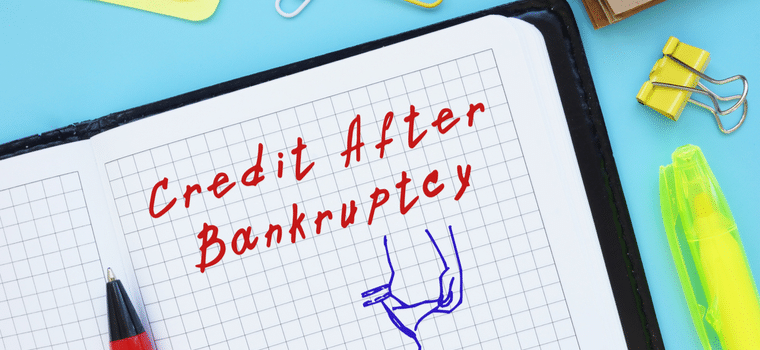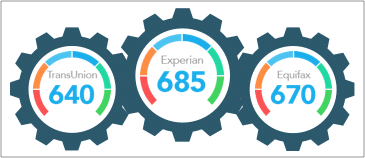Filing for bankruptcy dissolves debt and halts collection agencies from calling, but once the dust clears it’s time to get serious about your credit.
While starting anew is never easy, putting in the work is essential to strengthening your financial future. Follow these tips after a bankruptcy.
Identify Your Target
A bankruptcy remains on your credit reports for up to 10 years, although its impact lessens over time and as you rebuild your scores. The higher your scores were before bankruptcy, the more dramatic the drop will be as compared to someone with a lower score.
Let’s say you have a credit score in the 700s. A bankruptcy will likely drop the number by at least 200 points, but someone with a score in the 600s would probably see a drop of 150 points or fewer. While your drop is more dramatic (because you have further to fall), both scores wind up in the same place: somewhere within the 500 range.
While your new numbers aren’t pretty, you can now strategize and eventually hit your new credit score goal.
Focus on the Five Factors
VantageScore and FICO use five factors to create your credit scores. Payment history accounts for around 40%, outstanding debt is 35%, credit age is 10%, credit mix is 10%, and number of inquiries is 5%.
As you look at your credit, consider how to address each of these factors. For example:
- While you’ll need to apply for new credit and carry a balance, be mindful of how much debt you incur. Too much debt will impact your score negatively. Aim for credit utilization of less than 30%. (10% to 20% is ideal.)
- Ensure you can make payments on time, every time. Missing even one payment can deliver a blow to your scores.
- Watch how many times you apply for credit. Each one will result in a hard inquiry, and too many within a short time frame can lower your scores even more.
- While you may think closing old accounts can help boost your scores, the opposite is true. Credit age demonstrates how long you’ve maintained credit, so keep those older accounts open as long as they are in good standing.
Plan a New Budget
Good financial planning starts with taking an assessment of your income, expenses and extras. Once you know how much you need to cover your daily essentials, you’ll know how much you have left over to spend.
Apply for Secured Credit
A secured credit card is backed by a cash deposit you pay upfront. Once you receive the credit card, use it for small, affordable purchases, and then make your payments on time, every time.
Take Out a Loan
It may be difficult to get approved for a traditional loan or a mortgage, so a secured loan from your bank or credit union could be your best bet.
A secured loan is backed by money you already have deposited in a bank account. The money in the account is unusable during the life of your loan, but once you pay off the balance, you can access your funds again.
Monitor Your Credit Reports
Forging a new path after a bankruptcy takes time and patience. Keep tabs on your credit reports to ensure everything being documented is accurate. If you see any inaccuracies, dispute them with the credit bureaus immediately.
By being diligent and dedicated, the credit scores you see right after a bankruptcy will be back on track over time.




